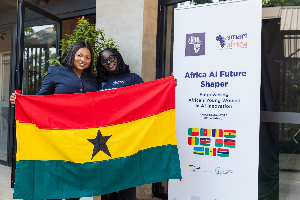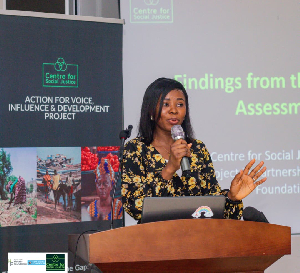Accra, Feb. 13, GNA - Ghana's annual production of salt of 250,000 metric tones falls far short of her potential for commercial production estimated at 2.5 to 3.0 million metric tones per annum, Mr Joe Baidoo-Ansah , Minister of Trade, Industry, Private Sector Development and PSI said on Wednesday.
This is due to inefficient production methods, obsolete machinery, lack of capital and industry data information and weak production infrastructure.
To salvage the situation, the Ministry with support from the Centre for Remote Sensing and Geographical Information Services and UNICEF, have established the National Geographic Information Systems (GIS) to provide the right information needed for an accelerated growth of the industry, Mr. Baidoo-Ansah.
Launching the GIS on Wednesday, the Minister said the salt industry had been identified as one of the strategic industries in which the country had high growth potentials and the PSI and the GIS would transform the Ghanaian salt industry into an internationally competitive one.
He said the system, which would tap both unexploited and underexploited salt deposits, would be capable of providing one of the best quality salts for the people in the sub-region and beyond. Benefits to be derived from the GIS include an information gateway for investors, a database for the salt industry, contours on producing areas in Ghana, detailed information on towns where there is salt and pictorial presentation on the salt industry in Ghana.
Mr Baidoo-Ansah said in recognition of the significant role the salt industry could play in the country's economy, the government selected the product as one of the President's special initiatives, a public-private sector partnership programme designed to develop new pillars of growth for the economy.
He pledged government's commitment to continue to work assiduously with the private sector to improve the policy environment for more attractive return on investment as well as address the inefficiencies in the salt industry.
Dr. George Ameh, UNICEF Representative, said UNICEF had supported the GIS project with 30,000 US dollars and had been collaborating with Ghana since 1994 to improve on its salt industry.
He commended the PSI for establishing the GIS which would enhance the export of good quality iodized salt, globally accepted as one of Ghana's greatest commodities.
He said statistics available to UNICEF indicated that Ghana had made substantial effort to curb iodine deficiency that fell from 75 per cent in 2005 to 51 per cent in 2006 and expressed the hope that the figure would increase in the coming years.
Dr. E. Amamoo-Otchere, CEO of Development Geo-Information Services, who made a geographic presentation on the salt producing areas, noted that there was the need to have a spatial description of the 2000 census to determine the demography and poverty levels of these areas so that the needed support could be provided.
He called on the government to address land ownership and development in these areas to develop the infrastructure and human resource base needed for the growth of the industry. Mr Joseph William Biney, President of the Salt Producers Association, who chaired the launch, urged the Ministry to organize workshops to sensitize the producers on the iodization process, packaging of salt for export and accessibility of the GIS programme to improve on their business.
He said this would help produce enough salt to feed a petrol-chemical industry adding that failure to do this would force the country to import salt in the near future.
Business News of Wednesday, 13 February 2008
Source: GNA












